Not in the mood for a gingerbread latte? Here's a list of the best Christmas beers
Two decades have passed since John and Chris Trogner decided to make a craft beer to mark the holiday season at Troegs Brewing, the Hershey, Pennsylvania, brewery they’d founded in late 1996.
Most “Christmas beers” in existence at the time leaned on darker malts and seasonal baking spices like cinnamon, cardamom, clove and nutmeg, but the Trogners wanted to add something different: Both loved the taste of sweet and sour cherries, and their operation was just down the road from a local honey source.
Using a Belgian yeast packing holiday flavors, they threw everything together on a whim on Friday, then left the batch to see what nature’s elves would stir up overnight.
When they returned the next day, the effect was overpowering.
“We could smell this incredible aroma of cherries and yeast,” John Trogner remembered. “The yeast had fermented so vigorously that the beer had climbed out of the tank. It smelled great, but we lost half the batch.”
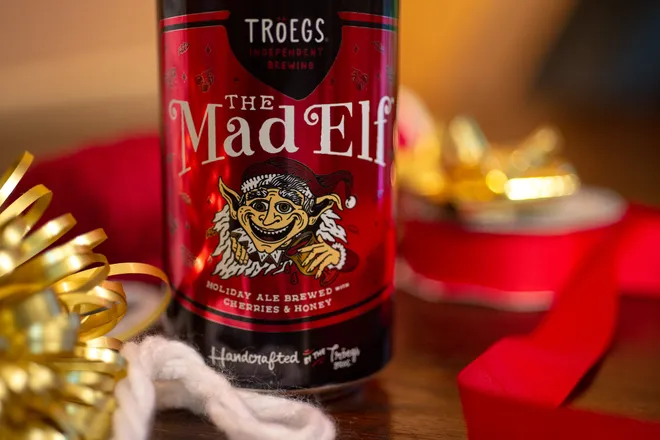
Such were the beginnings of The Mad Elf, now among a Santa’s workshop of Christmas beers that alight on store shelves this time of year, making spirits bright.
“People loved it,” Trogner said. “It just fit that holiday celebration thing, getting friends and family together. We never could brew enough.”
But what exactly is a Christmas beer? And what makes it different from a winter beer?
'This is where we get to be creative'
It depends on the brewer. While industry guidelines outline parameters for certain kinds of beers ― say, American-style amber lagers, or British-style imperial stouts ― no such definitions govern what Christmas should consist of.
“Holiday and Christmas ales leave it open to interpretation,” Trogner said. “As brewers, this is where we get to be creative.”
Christmas beers, then, aren’t so much a style of beer as they are ceremonial nods to the season, a cousin of dark winter warmers meant to jolly up a time of festive, sweater-weather gatherings. As with winter beers, they’re open to experimentation, generally darker and malty rather than hoppy, often barrel-aged, with a higher alcohol content. The combined effect is designed to give you the fuzzies.
“They’ve got some heft,” said Dan Becker, better known as Danny Fullpint of The Full Pint blog and podcast, based in greater Los Angeles. “It’s not like a 4.4% Modelo Especial.”
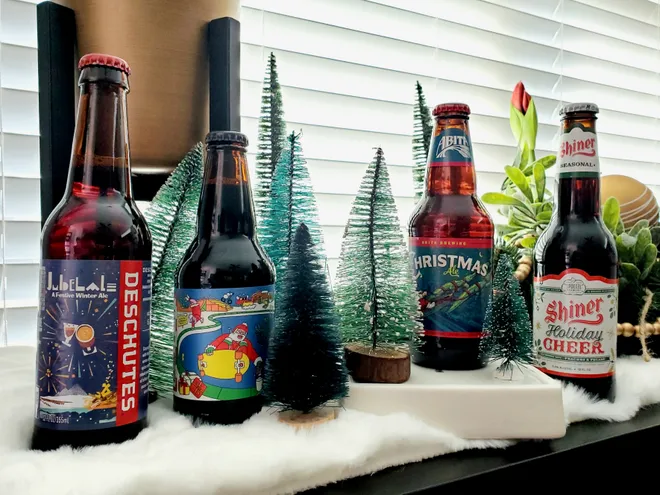
Christmas brews, though, take the idea even further, embracing flavors of fruit, sweetness, spices and smells redolent of the holidays. Think peppermint, gingerbread cookies and evergreen -- and spices like cinnamon, clove, cardamom and vanilla.
“What really separates them are the spices, the flavorings,” Becker said. “They’re trying to capture the imagination, like – this is Christmas in a bottle.”
For instance, there’s Bronx Brewery’s Jingle Jangle Holiday Ale, marked by cinnamon and vanilla; Jubelale, from Deschutes Brewery in Bend, Oregon, with notes of toffee and dusted cocoa; Fireside Chat, from 21st Amendment Brewing in San Leandro, California, flavored with toffee and cocoa nibs; and Santa’s Private Reserve, a stout from Rogue Ales and Spirits in Newport, Oregon, flavored with tahini, tangerine and chocolate.
On the other hand, there’s lighter beers like the well-known Saison Dupont’s Avec Les Bons Voeux (“With Good Wishes”), a smooth and alluringly rich saison-style beer that abandons traditional spices altogether for lemon, pepper and banana.
“Winter’s a huge drinking season in and of itself, but breweries go above and beyond with Christmas beers,” said Joshua Justice, marketing and social media director for Flying Saucer Draught Emporium, a Dallas-Fort Worth-based taproom operation with locations throughout Texas and the South.
Naturally, the story of Christmas beer begins with Vikings
In San Francisco, Anchor Brewing’s Christmas Ale, introduced in 1975, was considered by beer connoisseurs to be the granddaddy of modern holiday beers before the 127-year-old company’s demise earlier this year, Becker said. The landmark craft brewery announced last year it would not be producing its beloved seasonal beer and shuttered operations in July.
But the Christmas beer tradition is a millennium-old one, Justice said, tracing back to the Vikings, who made barley-based brew; as their winter “Jul” celebrations morphed over time into Christmas ones with the rise of Christianity, so too did the tradition of enjoying a good brew with close friends and family.
According to BeerAndBrewing.com, one medieval brew known as lambswool ― so called for the froth that glazed its surface ― was made with roasted apple, nutmeg, ginger and honey.
Christmas beers capitalized on the traditions of winter, a time of togetherness that before widespread refrigeration also offered better brewing conditions: yeasts don’t stress in cold temperatures like they do in heat, Justice said. They’re now produced by breweries throughout the U.S. and Europe, notably England, Belgium and Germany.
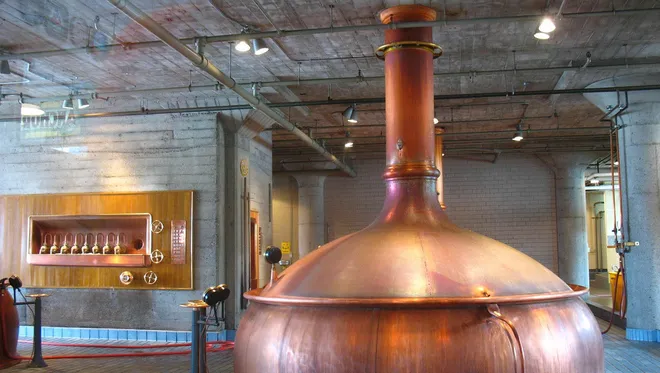
Modern Christmas beers trace their origins to the beginnings of the craft beer movement in the 1970s and early 1980s, with small breweries like California’s Anchor and Sierra Nevada and Boston’s Samuel Adams leading the way. Anchor’s version, the recipe for which was never divulged but was said to be tweaked yearly, tasted of spruce tips, clove and citrus.
“One of the magical things about that beer was that they never gave up what changes they did make,” Becker said. “So it was left up to the drinker’s imagination, where people might say it tasted more like spruce, or molasses. That was just kind of the lore behind that beer.”
That’s led, he said, to a funny trope within the industry – that seasonal beers somehow taste different every year, for better or worse.
“There’s people like my dad, who will be ‘Oh, it was a little better last year,’ or “they finally made it as good as it was two years ago,’” he said. Nonetheless, he said, “it’s the one magical thing that people look forward to and go back to every year.”
'Tis the season for Christmas beers -- but it doesn't last long
In general, the Christmas beer season runs from Thanksgiving to New Year’s Day, though some beers might appear as early as Halloween.
“We say, the holidays don’t start until you have your first Mad Elf,” said Trogner, of Troegs. “My tradition is, I put the Thanksgiving turkey in the oven with a Mad Elf in hand.”
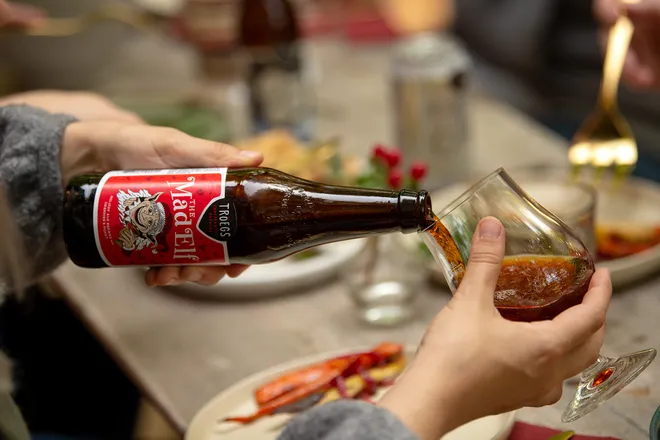
Timing is the trick for producers and sellers, Becker said.
“The challenge with all seasonals, but especially Christmas seasonals, is that after Dec. 31, nobody’s going to the store to buy them,” he said. “It’s a fine line. You have to time it perfectly where you can sell enough of it to make sense.”
The good thing is that many Christmas beers lend themselves to aging, with enthusiasts saving them for comparison tastings with their later versions.
“The most loyal fans of Anchor’s Christmas beer would save them for five or 10 years,” Becker said. “There was totally a culture around that beer.”
With age, Trogner said, Mad Elf’s raisin flavors become more pronounced, its cherry flavors waning and waxing.
“It’s kind of fun to see those nuanced changes,” Trogner said. “We work hard to make it as consistent as possible. But you can’t control Mother Nature.”
You can try, though: Trogner noted that as the brewery operation has grown, he and his brother designed extra tall tanks with Mad Elf’s monster foam specifically in mind.
“We didn’t want it climbing over the tanks again,” he said.
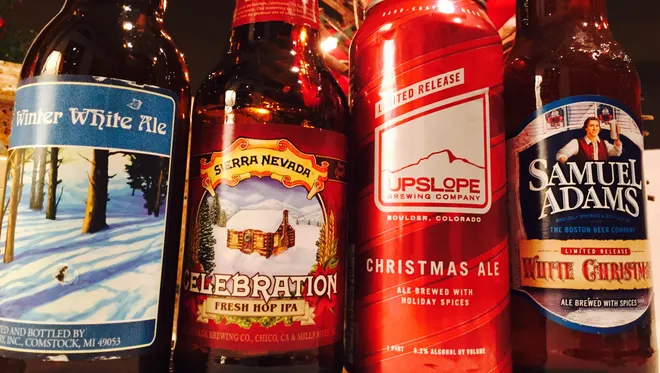
Here are some of the experts’ favorite holiday brews:
- GREAT LAKES CHRISTMAS ALE: “It’s malty, with almost a toasted fruitcake vibe,” Becker said. “It’s got breadiness but a little tang of fruit and spice. In the Midwest, which is a big beer drinking area, it’s a cult favorite.”
- PRAIRIE CHRISTMAS BOMB!: The beer is a Christmas-spiced version of Bomb!, the Oklahoma City brewery's flagship offering. “Their normal Bomb! is chocolate, coffee, chili and vanilla," Justice said. "This one is a giant, 13% alcohol imperial stout with all of these Christmas spices in it.”
- SAISON DUPONT AVEC LES BONS VOEUX: “It’s a really nice, blondish-orange pour,” Justice said. “It’s not as sour as most saisons – it’s more bready, with aromatic lemon, white pepper, banana and clove…. It’s a much cleaner winter beer – still big and boozy at 9.5%, but with way less winter spices.”
- SAINT ARNOLD’S CHRISTMAS ALE: “Here in Texas, Saint Arnold’s Christmas Ale is the heavy hitter,” Justice said. “It’s a winter warmer style, malt-forward with a little bit of spiciness but very mild. It’s just a nice, balanced beer with an orange-copper color and a nice rye bread and toasty malt flavor to it.”
- ST. BERNARDUS CHRISTMAS ALE: Justice said this Belgian Strong-style ale is "a really dark pour that’s got this molasses, toffee and candied raisin flavor. It definitely has some spice character to it, like candied orange peel, clove and cinnamon. The finish kind of lingers on your tongue with this big plum, fig and raisin flavor, almost like fruitcake.”
- SIERRA NEVADA CELEBRATION: While some might argue about whether Celebration is a Christmas beer, the piney seasonal beer has plenty of fans, including Becker, who calls it his favorite winter seasonal. “It’s an old-school IPA, but the joke with beer geeks is that they’ll taste it and say, ‘Oh, they added more nutmeg,’” he said, noting the well-known desires of fans to detect the slightest differences in Christmas brews from one year to the next. “And if you’ve been following the joke, you get it. Because then someone else will taste it and say, ‘No, they didn’t.’”
Disclaimer: The copyright of this article belongs to the original author. Reposting this article is solely for the purpose of information dissemination and does not constitute any investment advice. If there is any infringement, please contact us immediately. We will make corrections or deletions as necessary. Thank you.






